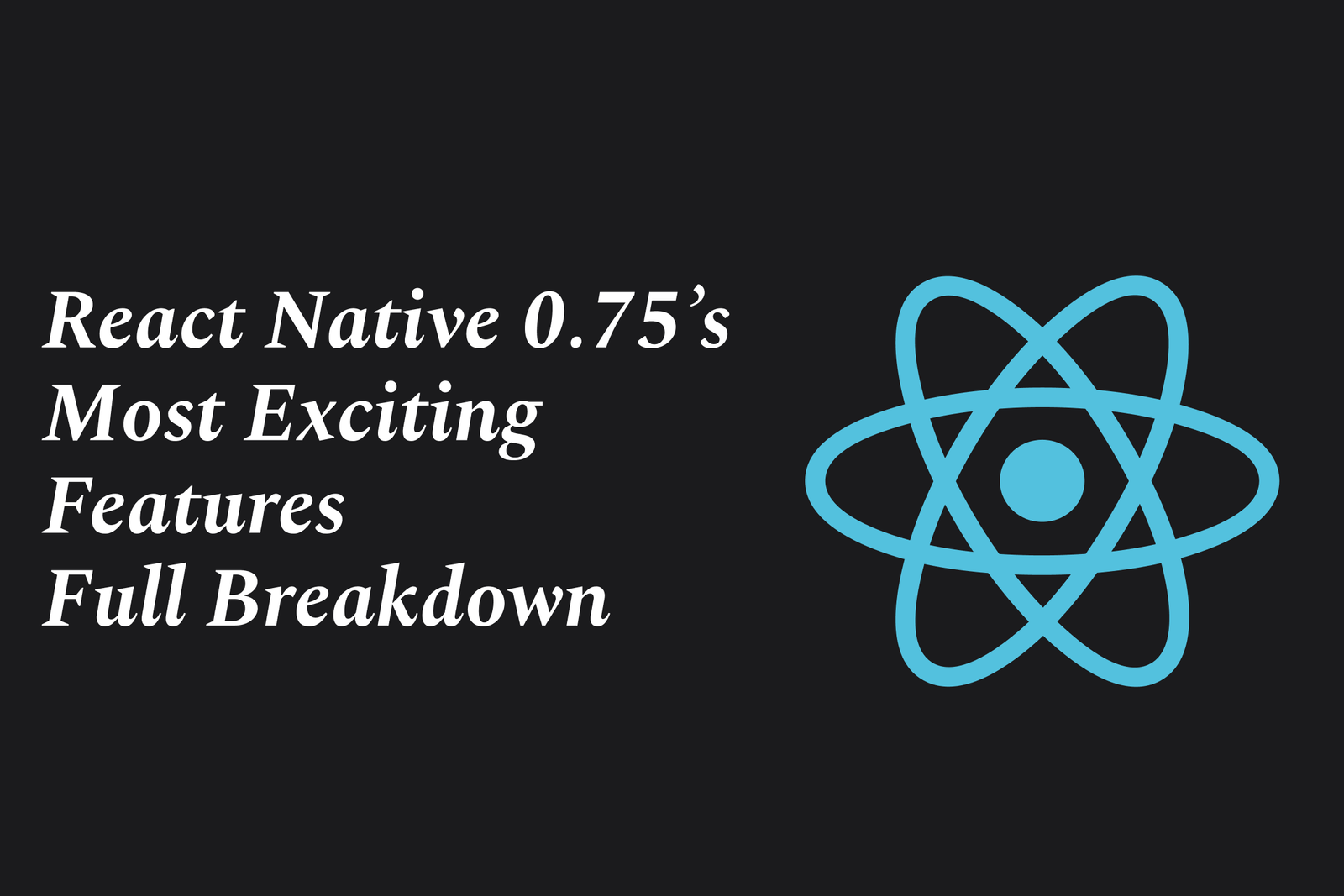React Native 0.75?S Most Exciting Features ? Full Breakdown
React Native 0.75 introduces the unified React framework One for seamless cross-platform development, enhanced native stack navigation with better performance, local-first architecture via Zero, and key optimizations to boost app responsiveness and developer experience.
React Native 0.75's Most Exciting Features – Full Breakdown
1 ) Unified React Framework: One
A new React framework named One aims to simplify building websites and apps by unifying React Native and React web development. It utilizes Vite to serve React Native and implements typed file system routing, enabling easier cross platform code sharing or divergence. This framework is designed with opinionated principles similar to Rails, aiming to reduce complexity while accelerating development.
2 ) Local First Architecture with Zero Integration
One has partnered with Zero (zerosync.dev) to support a local first architecture that enhances responsiveness and user experience. Zero optimizes server rendering without waterfalls and enables seamless handoff between server and client, all while avoiding bundle bloat or strict limitations, leading to highly efficient apps.
3 ) React Navigation Improvements
React Native 0.75 promotes React Navigation as the primary community tool for handling multiple screens in mobile apps. The updated library offers straightforward stack and tab navigation, works seamlessly on Android/iOS, and supports installation using npm or Expo. Notably, native stack navigators exhibit better animation performance as transitions run on the native UI thread.
4 ) Performance Optimization Insights
Achieving 60 frames per second remains a goal in React Native for smooth, native like app experiences. React Native 0.75 highlights the distinction between rendering on the JavaScript thread (handling business logic, event processing) and the UI (main) thread (handling native UI rendering and navigation animations). Optimizing both threads is essential to avoid dropped frames and maintain responsiveness, particularly for complex component updates and animations.
5 ) Developer Experience and Ecosystem Growth
The release takes into account developer feedback on framework complexity. Efforts focus on balancing new capabilities with simplicity, minimizing unnecessary abstraction, and fostering frameworks that allow developers to focus on building features rather than reinventing foundational elements. The community continues to debate and refine best practices for combining frontend frameworks and native app development.
Summary:
React Native 0.75 introduces promising innovations with the One framework unifying web and native React development, tight integration of local first strategies via Zero, improved navigation performance, and a stronger focus on smooth user experiences through optimized rendering. This release aims to enhance developer productivity while pushing React Native closer to achieving native grade performance and cross platform consistency.
https://justacademy.in/news-detail/android-system-permissions-overview
https://justacademy.in/news-detail/flutter-linux-desktop-support-progress
https://justacademy.in/news-detail/react-native-and-kotlin-multiplatform:-perfect-together?
https://justacademy.in/news-detail/android-smart-lock-and-security-features
https://justacademy.in/news-detail/flutter-vs-unity-for-game-dev-2025
Related Posts
Java supports GDPR and data privacy by enabling secure data handling through encryption, controlled access, and precise data management. It allows developers to minimize PII exposure, ensure data confidentiality, and design workflows that comply with data protection regulations effectively.
Java code quality tools have evolved to include advanced static analysis, integrated security checks, and AI-powered code reviews. These updates help developers detect bugs, enforce coding standards, and enhance security, streamlining the development process and improving overall code reliability.
Java remains a cornerstone in big tech companies, evolving with modern features like records, pattern matching, and virtual threads. Its robust ecosystem, enhanced performance, and growing AI integrations keep it vital for both legacy systems and innovative new projects.
Java and CI/CD pipeline optimizations streamline Java application development by automating builds, tests, and deployments. They improve efficiency through parallelization, caching, and secure secrets management, enabling faster feedback loops and more reliable, scalable software delivery.
Java supports modern cryptography standards through its flexible Java Cryptography Architecture (JCA), enabling integration of advanced algorithms like AES, EdDSA, and post-quantum tools. Libraries like Bouncy Castle offer FIPS-certified, hardware-accelerated implementations for secure development.
Java 23 enhances record patterns by enabling concise, direct destructuring of record components within pattern matching, simplifying type checks and data extraction. This improvement boosts code readability and expressiveness by reducing boilerplate in handling immutable data classes.
Java remains a top choice for mobile app backends, powering scalable, secure, and high-performance server-side solutions. Latest trends include cloud-native microservices, reactive programming, and enhanced JVM optimizations, enabling efficient, flexible, and robust mobile backend development.
Java SE 24 and LTS Java SE 21 offer enhanced features and performance, while Apache Spark 4.0.0 introduces Scala 2.13 support and advanced ML and SQL capabilities. Together, they empower developers to build scalable, high-performance data applications with modern tools.
JUnit 5 modernizes Java testing with a modular architecture, improved assertions, and seamless Java 8+ support. Beyond JUnit, tools like Mockito and AssertJ enhance mocking and assertions, creating a powerful, flexible ecosystem for writing clean, efficient Java unit tests.
Java plays a pivotal role in cloud automation tools by providing a robust, platform-independent language used to build scalable automation frameworks like Jenkins and Selenium, enabling efficient CI/CD pipelines, testing, and orchestration across diverse cloud environments.










